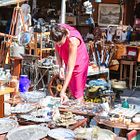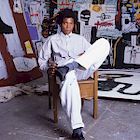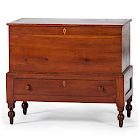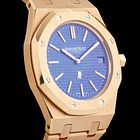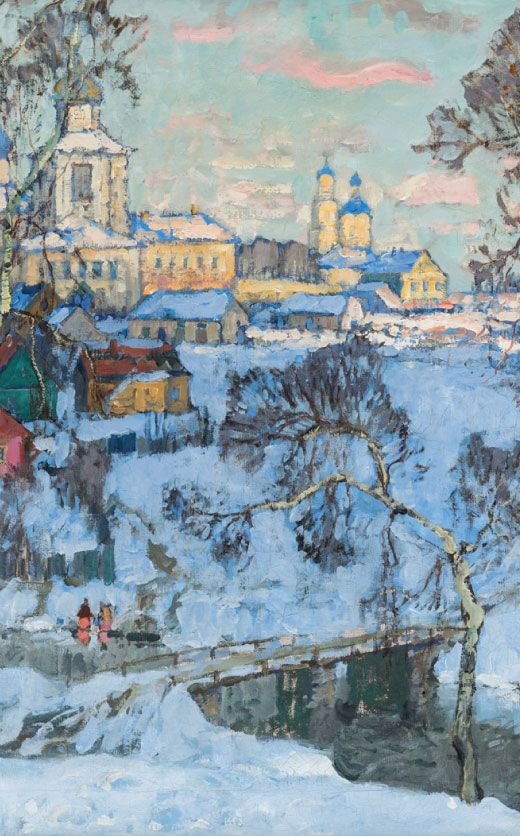Treasures of the East: Highlights from Brunk Auctions' Asian Art Sale
Brunk Auction's upcoming Asian Auction, taking place on November 18, 2025, brings together a superb selection of Chinese works of art that reflect centuries of tradition, craftsmanship, and cultural meaning.
The sale features a remarkable collection of jadeite and nephrite carvings, Qing and Ming porcelain, Tibetan gilt bronzes, painted scrolls, and Chinese furniture, much of it accompanied by receipts and provenance from esteemed dealers of the 1970s and 1980s.
These highlights offer a glimpse into the artistry and symbolism that define East Asian material culture, from the quiet spirituality of Buddhist imagery to the intricate precision of jade carving.
Chinese Carved Artichoke Green Jade Lotus Form Bowl (Lot 6)
A testament to Qing dynasty refinement and the scholar’s taste for elegant simplicity.
This exceptional artichoke-green nephrite jade lotus-form bowl (circa 1700–1800 A.D.) demonstrates the highest level of craftsmanship achieved during the Qing dynasty. Its thinly carved walls and refined lotus petal form reflect both technical mastery and symbolic resonance, as the lotus has long been associated with purity and enlightenment in Chinese art. The bowl bears a four-character seal mark reading “Chang Chun Chien Kuan”, believed to be the nom-de-plume of a literati owner, connecting it to a world of cultivated scholarship.
Provenance includes a 1975 receipt from Nagatani, Inc., Chicago, one of the most respected Asian art dealers of the period.
Chinese Coromandel Lacquered Eight-Panel Screen (Lot 48)
An opulent 18th-century screen that tells stories of courtly life through texture, lacquer, and line.
This magnificent Coromandel lacquered eight-panel screen, possibly 18th century, presents a grand palatial courtyard scene filled with figures, pavilions, and floral ornamentation. The reverse complements the narrative with birds, plants, and auspicious objects, making it as decorative as it is symbolic.
Coromandel screens were prized luxury furnishings in elite Qing households, used to divide spaces and impress visitors with their artistic detail. This example, from an important Atlanta private collection, retains a 1988 collection record sheet and stands as a testament to the enduring allure of Chinese lacquerware.
Chinese Carved Jade Recumbent Deer (Lot 7)
A miniature masterpiece symbolizing longevity, virtue, and the harmony of nature.
This mutton fat white jade carving portrays a recumbent deer gently holding a lingzhi fungus branch, a traditional emblem of immortality, in its mouth. The smooth polish and natural translucence of the stone create a lifelike softness, while the elegant composition suggests both stillness and vitality. Two characters are incised on the underside, and the piece is accompanied by a custom hardwood stand.
Purchased from Nagatani, Chicago in 1974, and tested for nephrite, this small-scale sculpture encapsulates the grace and auspicious symbolism cherished by Qing collectors.
Chinese Finely Carved Jade Three-Piece Buckle (Lot 8)
An Imperial jade buckle that blends design, mythology, and impeccable craftsmanship.
This three-piece jadeite belt buckle is a study in symmetry and sophistication. Each section is pierced and relief-carved with silkworm motifs and dragon heads, reflecting themes of transformation and strength. When connected, the buckle forms a continuous visual flow that embodies the unity of heaven and earth.
A 1980 receipt from Nagatani, Chicago describes it as a “Rare Chien Lung white jade Imperial Buckle,” linking it to the Qianlong period’s imperial workshops, known for their innovative jade carving. Tested as jadeite, the buckle measures seven inches when assembled and offers collectors a rare example of functional artistry.
Gilt Bronze Seated Buddhist Deity (Lot 20)
A radiant expression of Tibetan Buddhist devotion in gilt bronze and turquoise.
Possibly Tibetan in origin, this striking gilt bronze figure portrays a seated deity with six arms and three three-eyed faces, each rendered with serene expressions. The deity, likely Jnanadakini, the wisdom embodiment in Tantric Buddhism, is adorned with turquoise and jewel cabochons that accentuate its divine energy.
The meticulous casting and gilding reflect the influence of Himalayan metalwork during the 18th and 19th centuries, where religious symbolism and aesthetic finesse intertwined. From the estate of Dr. Elmer B. Brown, this work captures the transcendent beauty of Buddhist art and the enduring allure of the sacred image.
Camphor Glass Red Overlay Parrot Decorated Snuff Bottle (Lot 35)
Avian grace and imperial color combine in this 19th-century overlay glass bottle.
Delicately carved from white camphor glass with a rich red overlay, this snuff bottle features parrots perched amid flowering branches, symbols of joy and fidelity in Chinese art. The fine carving of the red overlay demonstrates technical mastery and aesthetic precision.
From the Dorothy Torbert Brink Collection, Laguna Hills, California, and later a private Asheville collection, this piece appears as #46 on a 1985 appraisal by Robert Hall, a leading authority on Chinese snuff bottles. Its exceptional provenance and craftsmanship make it a standout in this important sale.
Collectors can explore a dynamic selection of Chinese jade carvings, bronzes, snuff bottles, painted scrolls, and furniture, many with documentation from esteemed 20th-century collections.
See the full catalog and register to bid on Bidsquare.com.
- Treasures of the East: Highlights from Brunk Auctions' Asian Art Sale
- Pre-Columbian Art & Beyond: Timeless Legacies of the Ancient Americas
- Featured Artist: Frank Stella (1936–2024)
- A Vanderbilt & Whitney Legacy: The Collection of Marylou Whitney & John Hendrickson
- Behind the Curtain: The Tony Walton Collection at Willow Auction House
- Fine Western & American Art: Coeur d’Alene’s November Sale Celebrates the Spirit of the West
- A Library of Curiosities
- The Poetry of Form: Jean (Hans) Arp’s Lasting Influence on Modern Art
- Modern Meets Antiquity: House of Craven’s Fall Modern Art & Design Signature Auction
- Diving Into History: Nation’s Attic’s Annual Auction Explores the Depths of Diving Innovation



 EUR
EUR CAD
CAD AUD
AUD GBP
GBP MXN
MXN HKD
HKD CNY
CNY MYR
MYR SEK
SEK SGD
SGD CHF
CHF THB
THB.jpeg)
.jpeg)
.jpeg)
.jpeg)
.jpeg)









